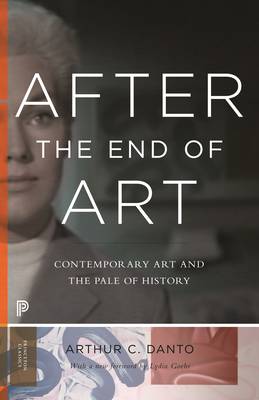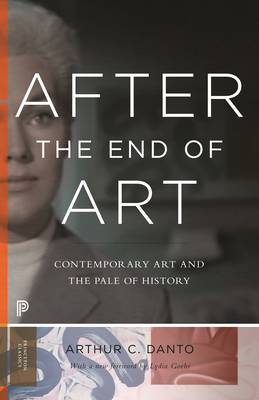
- Retrait gratuit dans votre magasin Club
- 7.000.000 titres dans notre catalogue
- Payer en toute sécurité
- Toujours un magasin près de chez vous
- Retrait gratuit dans votre magasin Club
- 7.000.0000 titres dans notre catalogue
- Payer en toute sécurité
- Toujours un magasin près de chez vous
26,45 €
+ 52 points
Description
The classic and provocative account of how art changed irrevocably with pop art and why traditional aesthetics can't make sense of contemporary art
A classic of art criticism and philosophy, After the End of Art continues to generate heated debate for its radical and famous assertion that art ended in the 1960s. Arthur Danto, a philosopher who was also one of the leading art critics of his time, argues that traditional notions of aesthetics no longer apply to contemporary art and that we need a philosophy of art criticism that can deal with perhaps the most perplexing feature of current art: that everything is possible. An insightful and entertaining exploration of art's most important aesthetic and philosophical issues conducted by an acute observer of contemporary art, After the End of Art argues that, with the eclipse of abstract expressionism, art deviated irrevocably from the narrative course that Vasari helped define for it in the Renaissance. Moreover, Danto makes the case for a new type of criticism that can help us understand art in a posthistorical age where, for example, an artist can produce a work in the style of Rembrandt to create a visual pun, and where traditional theories cannot explain the difference between Andy Warhol's Brillo Box and the product found in the grocery store. After the End of Art addresses art history, pop art, "people's art," the future role of museums, and the critical contributions of Clement Greenberg, whose aesthetics-based criticism helped a previous generation make sense of modernism. Tracing art history from a mimetic tradition (the idea that art was a progressively more adequate representation of reality) through the modern era of manifestos (when art was defined by the artist's philosophy), Danto shows that it wasn't until the invention of pop art that the historical understanding of the means and ends of art was nullified. Even modernist art, which tried to break with the past by questioning the ways in which art was produced, hinged on a narrative.Spécifications
Parties prenantes
- Auteur(s) :
- Editeur:
Contenu
- Nombre de pages :
- 272
- Langue:
- Anglais
- Collection :
Caractéristiques
- EAN:
- 9780691163895
- Date de parution :
- 22-09-14
- Format:
- Livre broché
- Format numérique:
- Trade paperback (VS)
- Dimensions :
- 140 mm x 222 mm
- Poids :
- 258 g

Les avis
Nous publions uniquement les avis qui respectent les conditions requises. Consultez nos conditions pour les avis.






